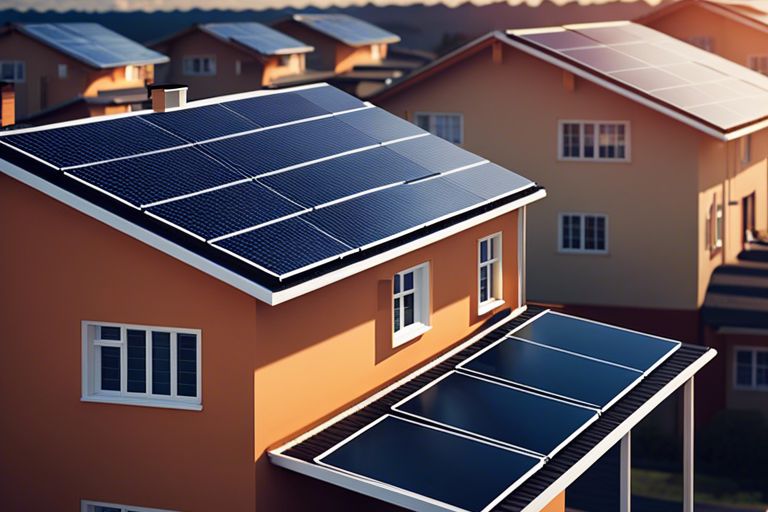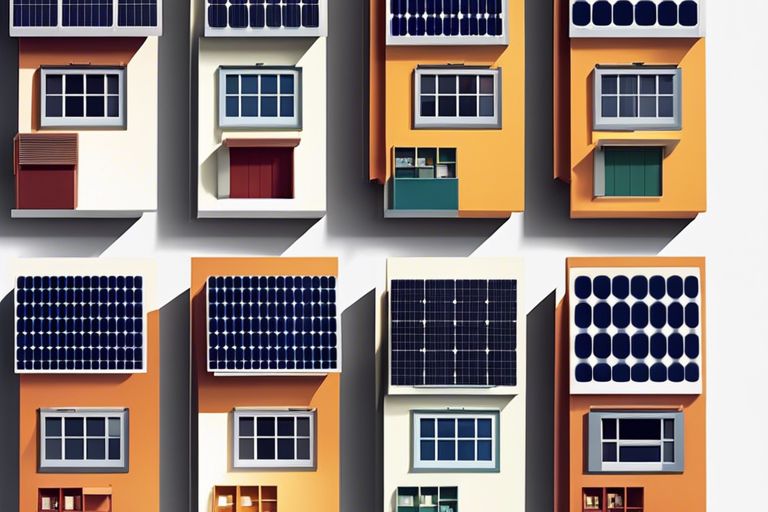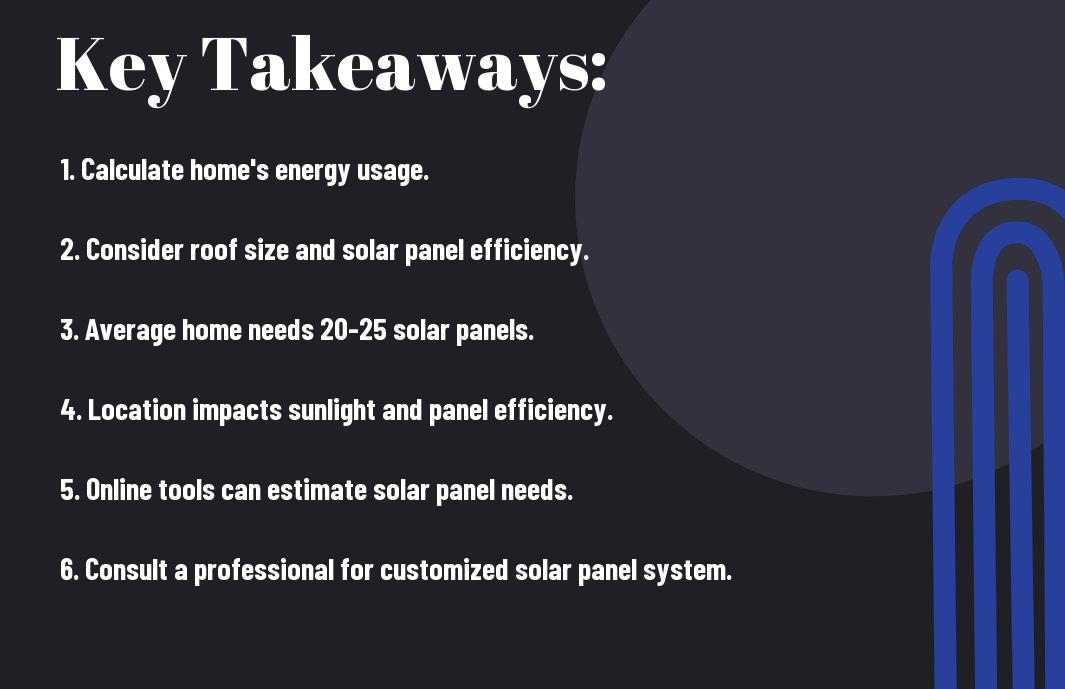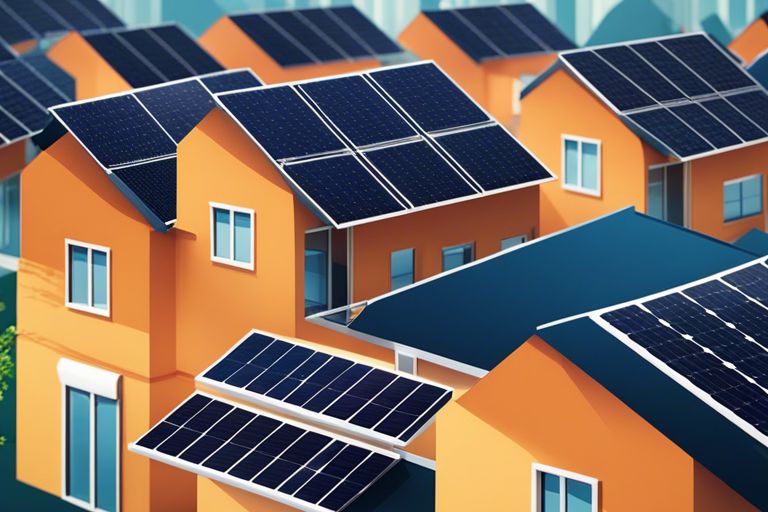Overwhelmed by the prospect of going solar? Calculating the number of solar panels needed to power your home may seem like a daunting task, but fear not – we’ve got you covered. In this guide, we will break down the key factors that determine the number of solar panels required for your specific energy needs. By the end of this article, you’ll have a clear understanding of how to assess your energy usage and make an informed decision on the right solar panel setup for your home.
Key Takeaways:
- Rooftop Size: The number of solar panels needed depends on the size of the roof and the energy consumption of the home.
- Energy Usage: Understanding your electricity usage is crucial in determining how many solar panels are needed to power your home efficiently.
- Solar Panel Efficiency: The efficiency of solar panels also plays a significant role in determining the number needed for a home, as more efficient panels require fewer for the same energy output.
Determining Your Energy Needs
For How Many Solar Panels Do I Need To Power a House?, it is imperative to determine your energy needs to accurately size your solar panel system. By understanding how much electricity your household consumes on a daily basis, you can calculate the number of solar panels required to meet your requirements.
Calculating Your Daily Energy Consumption
One way to calculate your daily energy consumption is to review your utility bills and identify your average daily kWh usage. By analyzing this data over a specific period, you can determine your household’s typical energy needs. This figure serves as a useful starting point when estimating the size of your solar panel system.
Factors Affecting Energy Requirements
Needs
- The size of your home and the number of appliances and electronics you use daily can significantly impact your energy requirements. Larger homes with more devices will likely consume more electricity on a daily basis.
Energy
- The energy efficiency of your home plays a crucial role in determining your energy needs. Upgrading to energy-efficient appliances, improving insulation, and sealing air leaks can help reduce your overall electricity consumption.
Solar Panel Efficiency and Rating
Understanding Solar Panel Efficiency
Any homeowner considering going solar should have an understanding of solar panel efficiency. Solar panel efficiency refers to how well a panel can convert sunlight into usable electricity. Most solar panels on the market today have an efficiency rating ranging from 15% to 22%. This means that only a percentage of the sunlight that hits the panel gets converted into electricity. Higher efficiency panels are usually more expensive but can generate more electricity in less space.
How to Choose the Right Solar Panel Rating
Solar panel ratings are an necessary factor to consider when choosing the right system for your home. The rating of a solar panel indicates how much power it can produce under standard test conditions. When deciding on a solar panel rating, you should consider factors such as your energy consumption, roof space available for installation, budget, and long-term goals for energy efficiency. Higher rated panels will generate more electricity per square foot, which can be beneficial if you have limited roof space or want to maximize your energy production.
A solar panel system with a higher rating may be a better investment in the long run, as it can provide more electricity and potentially save you more money on your energy bills over time. It’s necessary to research and compare different panel ratings to choose the one that best fits your home’s energy needs and budget.
Assessing Your Roof’s Solar Potential
Evaluating Roof Size and Orientation
Keep in mind that the size and orientation of your roof play a crucial role in determining how many solar panels you will need to power your home efficiently. The ideal roof for solar panels should have enough unobstructed space to accommodate the panels and receive maximum sunlight exposure throughout the day. A south-facing roof with minimal shading is typically optimal for solar energy production.
Shading and Obstruction Considerations
For a successful solar panel installation, it’s crucial to assess any potential shading or obstructions that could hinder sunlight exposure on your roof. Trees, nearby buildings, or even chimneys can cast shadows on your roof and significantly impact the efficiency of your solar panels. Conduct a thorough evaluation of your roof throughout the day to determine the extent of shading and identify the best areas for solar panel placement.
Rooftop shading can vary depending on the time of day and season. To ensure maximum solar energy production, consider trimming back any overhanging branches or addressing nearby structures that may block sunlight to your roof. By minimizing shading and obstructions, you can optimize the performance of your solar panel system and maximize your energy savings.

Sizing Your Solar Panel System
Calculating the Required System Size
Not sure how many solar panels you need to power your home? To calculate the required system size, you first need to determine your daily energy consumption in kilowatt-hours. You can find this information on your electricity bill or by using energy monitoring devices. Next, consider factors like the hours of sunlight your location receives per day and the efficiency of the solar panels.
Oversizing and Undersizing Considerations
Sizing your solar panel system is crucial to ensure it meets your energy needs. Oversizing allows for greater energy production, which can be beneficial if you plan to add more appliances in the future or if your energy usage increases. However, oversizing can also lead to higher upfront costs. On the other hand, undersizing may result in inadequate energy production, causing you to rely on grid power more frequently.
When considering oversizing and undersizing, it is vital to strike a balance between meeting your current energy needs and allowing for flexibility in the future. By carefully assessing your energy usage patterns and potential changes, you can determine the optimal system size for your home.
Considering Local Climate and Weather Patterns
Despite the general guidelines on the number of solar panels needed to power a home, it is crucial to consider your local climate and weather patterns to optimize energy production. If you are wondering how many solar panels you need based on your specific location, you can check out this Wondering How Many Solar Panels You Need? Here’s a … for more tailored information.
Impact of Sunlight Hours on Energy Production
The number of sunlight hours in your area directly affects how much energy your solar panels can produce. Regions with longer, sunnier days will generate more electricity compared to areas with shorter days. Understanding your area’s sunlight patterns can help you calculate the right number of solar panels needed to meet your energy requirements efficiently.
Effects of Temperature and Humidity on Panel Efficiency
To determine the number of solar panels required for your home, you must also consider how temperature and humidity impact panel efficiency. Higher temperatures can reduce the efficiency of solar panels, while lower temperatures can enhance performance. Additionally, humidity levels can affect how well panels convert sunlight into electricity.
Weather conditions play a significant role in the efficiency of solar panels. In regions with extreme temperatures or high humidity, it’s crucial to account for these factors when calculating the number of solar panels needed to power your home effectively.
Effects of Temperature and Humidity on Panel Efficiency
| Temperature | Efficiency Impact |
| High | Reduces efficiency |
| Low | Enhances performance |

Additional Factors to Consider
After determining the number of solar panels needed to power your home, there are still additional factors to consider to ensure optimal energy efficiency and uninterrupted power supply. These factors include energy storage and backup systems, as well as inverter and mounting system requirements.
Energy Storage and Backup Systems
Factors such as energy storage and backup systems are important considerations when transitioning to solar power. In addition to solar panels, you may need to invest in batteries to store excess energy generated during the day for use at night or during cloudy periods. Backup systems like generators can also provide added assurance during power outages, ensuring uninterrupted power supply for your home.
- Consider investing in energy storage solutions such as batteries to store surplus energy for later use.
- Backup systems like generators can provide added security during power outages.
After addressing these factors, you can ensure a reliable and continuous power supply for your home, even during adverse weather conditions or grid failures.
Inverter and Mounting System Requirements
Requirements for inverters and mounting systems are crucial for the efficient operation of your solar panel setup. Inverters are vital for converting the direct current (DC) generated by solar panels into alternating current (AC) used in your home. You’ll also need a sturdy mounting system to securely install your panels at the optimal angle for maximum sunlight exposure.
Mounting systems need to be durable and installed correctly to ensure the longevity and effectiveness of your solar panels. A professional assessment can help determine the most suitable mounting system for your roof type and ensure proper installation for optimal energy production.
Properly installed inverters and mounting systems are vital for the efficient operation and longevity of your solar panel system. Consider consulting with a professional to determine your specific requirements and ensure a successful solar panel installation.

Conclusion: To wrap up
Considering all points discussed in the article, determining how many solar panels are needed to power your home ultimately depends on various factors such as your location, energy consumption, roof size, and specific goals. By evaluating these considerations and working with a solar panel provider, you can find the optimal solution that meets your energy needs while also considering budget and space constraints. Note, investing in solar power not only helps offset energy costs but also reduces your carbon footprint, contributing to a more sustainable future for you and the planet.
Q: How many solar panels are needed to power a home?
A: The number of solar panels needed to power a home depends on several factors, including the home’s energy consumption, location, roof size, and type of solar panels used.
Q: What factors determine how many solar panels are needed for a home?
A: Factors that determine the number of solar panels needed for a home include the average daily electricity usage, peak sunlight hours in the location, roof angle and orientation, shading from surrounding trees or buildings, and the efficiency of the solar panels.
Q: How can I calculate the number of solar panels needed for my home?
A: To calculate the number of solar panels needed for your home, you can use an online solar panel calculator that takes into account your electricity usage, location, roof characteristics, and solar panel efficiency. Additionally, consulting with a professional solar installer can help determine the optimal number of panels for your specific needs.
